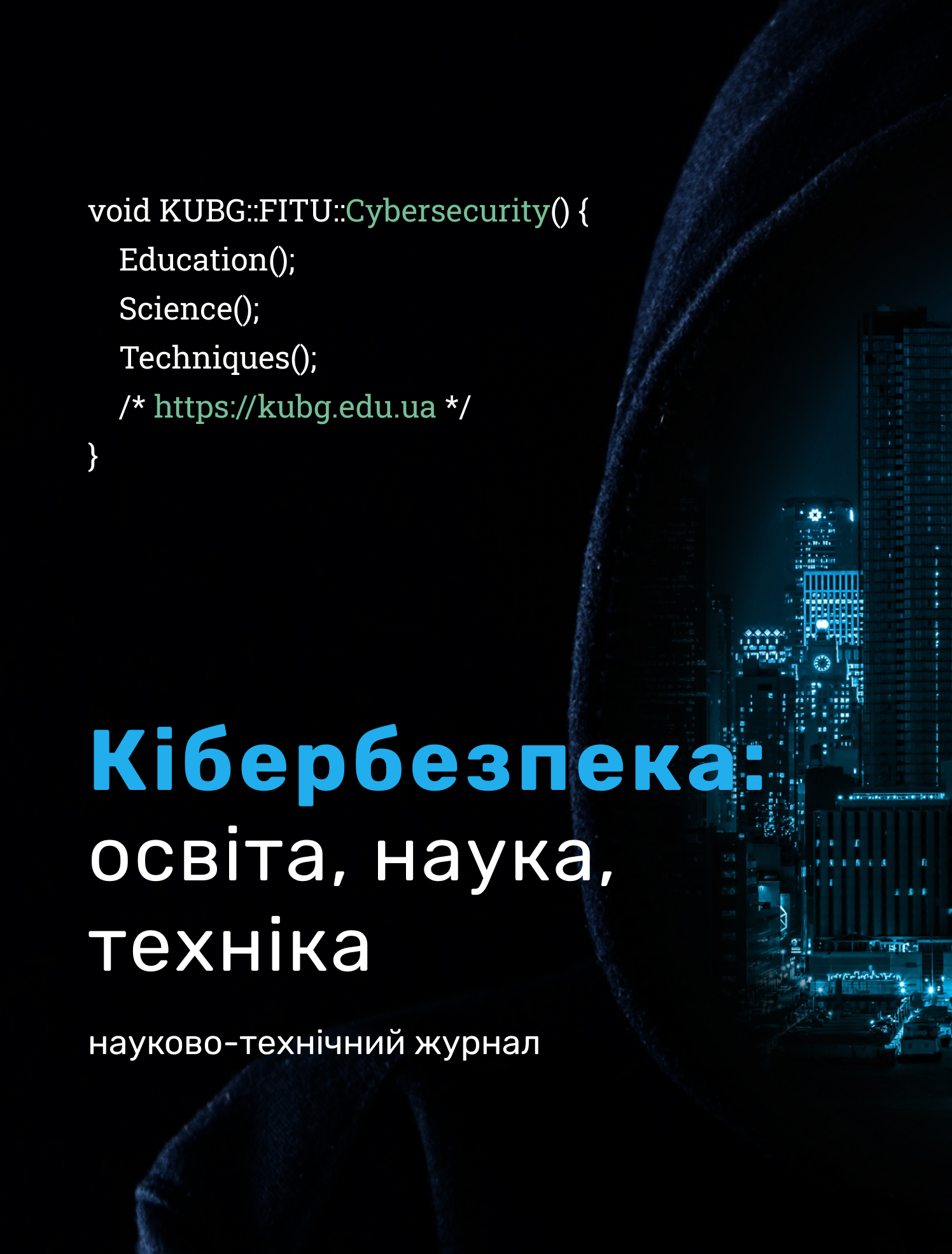МЕТОДИ РЕАЛІЗАЦІЇ ВИЯВЛЕННЯ ДЕЗІНФОРМАЦІЇ У СОЦІАЛЬНИХ МЕРЕЖАХ НА ОСНОВІ ШТУЧНОГО ІНТЕЛЕКТУ
DOI:
https://doi.org/10.28925/2663-4023.2025.30.965Ключові слова:
виявлення джерела дезінформації; фейкові новини; машинне навчання; соціальна мережа; метод Лейдена; метод ЛувенаАнотація
У статті розглянуто сучасні підходи до автоматизованого виявлення дезінформації у соціальних мережах із застосуванням технологій штучного інтелекту. Проаналізовано еволюцію методів — від лінгвістичного аналізу текстів і класичних алгоритмів машинного навчання до глибинних нейронних мереж і трансформерних моделей. Показано, що традиційні статистичні методи не забезпечують необхідної точності при обробці великих обсягів даних, тоді як моделі на основі CNN, RNN і BERT демонструють високу ефективність завдяки здатності враховувати контекст і семантичні зв’язки. Окрему увагу приділено мультимодальному аналізу, який поєднує обробку тексту, зображень і відео для виявлення складних типів фейків, зокрема deepfake. Запропоновано використання методу Лейдена як інноваційного підходу до кластеризації соціальних графів, що дозволяє виявляти координовані спільноти користувачів, які поширюють дезінформацію. Проведено експериментальне дослідження на даних із соціальної мережі Twitter, яке підтвердило високу результативність алгоритму Лейдена у порівнянні з методом Лувена. Отримані показники модульності (0,82) та щільності кластерів (0,74) засвідчили чітку структуризацію дезінформаційних спільнот і можливість виявлення до 78 % бот-акаунтів. Розроблена модель поєднує аналіз соціального графа з методами обробки природної мови (NLP) для одночасного визначення джерел дезінформації та змісту поширюваних повідомлень. Зроблено висновок, що інтеграція методів кластеризації графів і машинного навчання є перспективним напрямом у створенні систем автоматичного моніторингу соціальних мереж. Подальші дослідження доцільно зосередити на розробленні пояснюваних моделей (Explainable AI), багатомовній адаптації та впровадженні технологій протидії фейкам безпосередньо в інфраструктуру соціальних платформ.
Завантаження
Посилання
Roumeliotis, K. I., Tselikas, N. D., & Nasiopoulos, D. K. (2025). Fake news detection and classification: A comparative study of convolutional neural networks, large language models, and natural language processing models. Future Internet, 17(1).
Ji, L., & Xie, H. (2025). A modified method on improving power grid resilience based on the Louvain algorithm. Sustainable Energy, Grids and Networks, 101883.
Anuar, S. H. H., Abas, Z. A., Yunos, N. M., Zaki, N. H. M., Hashim, N. A., Mokhtar, M. F., ... & Nizam, A. F. (2021, December). Comparison between Louvain and Leiden algorithm for network structure: A review. In Journal of Physics: Conference Series (Vol. 2129, No. 1, p. 012028). IOP Publishing.
Traag, V. A., Waltman, L., & Van Eck, N. J. (2019). From Louvain to Leiden: Guaranteeing well-connected communities. Scientific Reports, 9(1), 1–12.
Singlan, N., Abou Choucha, F., & Pasquier, C. (2025). A new similarity-based adapted Louvain algorithm (SIMBA) for active module identification in p-value attributed biological networks. Scientific Reports, 15(1), 11360.
Ghosh, S., Halappanavar, M., Tumeo, A., Kalyanaraman, A., Lu, H., Chavarria-Miranda, D., ... & Gebremedhin, A. (2018, May). Distributed louvain algorithm for graph community detection. In 2018 IEEE international parallel and distributed processing symposium (IPDPS) (pp. 885-895). IEEE.
Sharma, B., Kathirvel, P., & Hegde, S. R. (2025). Identifying communities in the virus–host protein–protein interaction networks. In Computational Virology (pp. 307–319). New York, NY: Springer US.
Blondel, V. D., Guillaume, J. L., Lambiotte, R., & Lefebvre, E. (2008). Fast unfolding of communities in large networks. Journal of Statistical Mechanics: Theory and Experiment, 2008(10), P10008.
Doropoulos, S., Karapalidou, E., Charitidis, P., Karakeva, S., & Vologiannidis, S. (2025). Beyond manual media coding: Evaluating large language models and agents for news content analysis. Applied Sciences, 15(14), 8059.
Li, X. (2025). Translator’s centrality and ideology in Chinese-English bilingual news: A case study of texts from the China Daily website. Arts, Culture and Language, 1(3).
Hernández, R., Gutiérrez, I., & Castro, J. (2025). Social network analysis: A novel paradigm for improving community detection. International Journal of Computational Intelligence Systems, 18(1), 87.
StopFake. (n.d.). Про нас. https://www.stopfake.org/uk/pro-nas/
VoxUkraine. (n.d.). VoxCheck. https://voxukraine.org/voxcheck
Vysotska, V., & Nazarkevych, M. (2025). Development of an information technology for detecting the sources and networks of disinformation dissemination in cyberspace based on machine learning methods. Eastern-European Journal of Enterprise Technologies, 4.
Danylyk, V., Vysotska, V., & Nazarkevych, M. (2024). Disinformation, fakes and propaganda identification methods in mass media based on machine learning. Cybersecurity: Education, Science, Technique, 1(25), 449–467.
Vysotska, V., Nazarkevych, M., Vladov, S., Lozynska, O., Markiv, O., Romanchuk, R., & Danylyk, V. (2024). Devising a method for detecting information threats in the Ukrainian cyberspace based on machine learning. Eastern-European Journal of Enterprise Technologies, 132(2).
Опубліковано
Як цитувати
Номер
Розділ
Ліцензія
Авторське право (c) 2025 Марія Назаркевич, Вікторія Висоцька, Ростислав Юринець, Назар Наконечний

Ця робота ліцензується відповідно до Creative Commons Attribution-NonCommercial-ShareAlike 4.0 International License.




